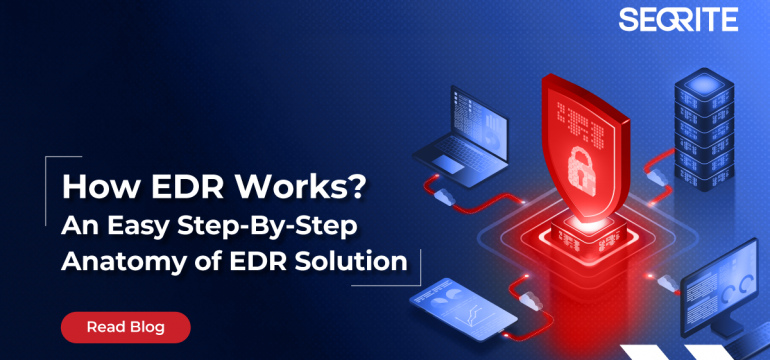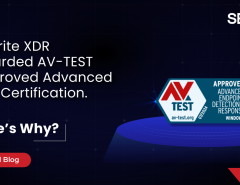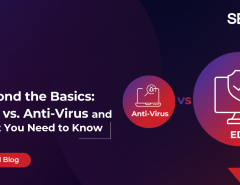How EDR Works? An Easy Step-By-Step Anatomy of EDR Solution
In today’s ever-evolving cyber threat landscape, organizations face an escalating challenge in safeguarding their critical assets from the relentless onslaught of sophisticated attacks. As adversaries become increasingly adept at concealing their activities within trusted components of the digital environment, traditional security measures often struggle to detect their covert maneuvers. This is where Endpoint Detection and Response (EDR) emerges as a game-changing solution, empowering security teams to proactively identify, investigate, and neutralize complex threats before they can wreak havoc.
Understanding the Evolving Threat Landscape
The rise of Advanced Persistent Threats (APTs) has significantly undermined the efficacy of conventional security approaches. These stealthy and persistent adversaries leverage a diverse arsenal of tactics, techniques, and procedures (TTPs) to infiltrate networks, often going undetected for extended periods. From fileless malware and malicious scripts to poisoned attachments and stolen user credentials, these threat actors have become increasingly adept at circumventing traditional defenses.
The Limitations of Endpoint Protection Platforms (EPPs)
Endpoint Protection Platforms (EPPs) have long been the first line of defense against malware, effectively blocking known threats. However, as the threat landscape evolves, EPPs alone can no longer safeguard modern enterprises. While EPPs excel at preventing the entry of malicious code, they often fall short in detecting and responding to advanced, stealthy attacks that have already gained a foothold within the network.
Introducing Endpoint Detection and Response (EDR)
Endpoint Detection and Response (EDR) solutions address the limitations of EPPs by providing a comprehensive, multi-layered approach to endpoint security. EDR goes beyond mere prevention, offering advanced threat detection, investigation, and automated response capabilities. By continuously monitoring and gathering data from endpoints, EDR solutions can quickly identify anomalous behaviours, track an attacker’s path, and initiate swift remediation measures to mitigate the impact of a breach.
The Anatomy of an EDR Solution
An effective EDR solution comprises several key components that work in tandem to safeguard the endpoint ecosystem:
Continuous Endpoint Monitoring
EDR solutions employ advanced sensors to continuously monitor all ongoing activities at the endpoints, analyzing egress and ingress traffic patterns to establish a baseline of normal behaviour. This persistent vigilance enables the system to swiftly detect and flag any deviations from the established norm, serving as an early warning system against potential threats.
Anomaly Identification and Threat Detection
By leveraging sophisticated analytics and machine learning algorithms, EDR solutions can quickly identify unknown or suspicious behaviours at the endpoint level. This real-time anomaly detection capability allows organizations to track an attacker’s movements, gaining valuable insights into their tactics and techniques.
Automated Remediation and Incident Response
When configured with predefined rules, EDR solutions can automatically deploy rapid incident response operations to block indicators of compromise (IoCs) and contain the spread of malicious artifacts. This automated remediation capability significantly reduces the time between threat detection and mitigation, minimizing the potential for damage.
Endpoint Isolation and Containment
Upon the detection of a cyber incident, EDR solutions can swiftly isolate the affected endpoints, preventing the malicious activity from propagating across the network. This compartmentalization strategy helps limit the breach’s scope and safeguard the organization’s critical assets.
Comprehensive Investigation and Threat Hunting
EDR solutions detect and respond to threats and provide comprehensive investigative capabilities. By aggregating and analyzing relevant data, security teams can conduct thorough forensic analyses, uncover the root causes of incidents, and proactively hunt for concealed threats within the environment.
Seamless Integration and Centralized Visibility
Effective EDR solutions integrate seamlessly with an organization’s existing security infrastructure, consolidating threat intelligence and incident data from multiple sources. This centralized visibility empowers security teams to understand the threat landscape holistically, enabling informed decision-making and streamlined response efforts.
The Synergy of EDR and EPP
While EDR represents a significant advancement in endpoint security, it is not designed to replace traditional Endpoint Protection Platforms (EPPs). Rather, the combination of EDR and EPP creates a powerful, multi-layered defense mechanism that addresses the evolving needs of modern organizations.
EPPs serve as the first line of defense, effectively blocking known threats and preventing the initial entry of malware. EDR, on the other hand, provides the next level of security, offering advanced threat detection, investigation, and automated response capabilities to combat the more sophisticated and elusive attacks that may slip through the EPP’s defenses.
Organizations can achieve a robust and resilient endpoint protection posture by implementing a comprehensive security strategy that integrates EDR and EPP. This strategy ensures critical data and systems’ confidentiality, integrity, and availability.
The Rise of Cloud-Native EDR Solutions
As the global shift to remote work arrangements has accelerated, the need for agile and scalable security solutions has become increasingly paramount. Cloud-native EDR platforms, such as Seqrite EDR, have emerged as a compelling option for organizations seeking to fortify their endpoint security without the constraints of on-premises infrastructure.
These cloud-native EDR solutions leverage the cloud’s inherent benefits, including enhanced scalability, flexibility, and accessibility, to deliver comprehensive endpoint protection. By continuously monitoring endpoints, conducting contextual assessments of telemetry events, and automating real-time responses, cloud-native EDR platforms empower security teams to swiftly identify, investigate, and remediate complex threats, even in distributed hybrid environments.
Empowering In-House Security Teams
Traditionally, organizations have often relied on external security firms to conduct thorough attack investigations and threat-hunting activities. However, with the advent of advanced EDR solutions, in-house security teams can now take a more autonomous and proactive approach to securing their endpoints.
EDR platforms like Seqrite EDR streamline the investigation process by aggregating crucial data, improving compliance adherence and standards alignment. This enables security analysts to conduct comprehensive threat assessments and incident response operations without the need for extensive outsourcing, thereby reducing reliance on external resources and strengthening the organization’s overall security posture.
Uncovering Concealed Threats with Historical Data
One of the key advantages of EDR solutions is their ability to maintain a comprehensive historical record of endpoint activity. This robust event data storage, combined with advanced threat-hunting capabilities and threat intelligence integration, empowers security teams to uncover even the most sophisticated, stealthy threats that may have evaded detection in the past.
By leveraging the power of historical data analysis, security analysts can piece together the breadcrumbs of an attack, tracing the attacker’s movements and uncovering hidden indicators of compromise (IoCs). This deep-dive investigative approach enables organizations to respond to immediate threats and proactively fortify their defenses against future attacks, ultimately enhancing their overall cyber resilience.
Summing Up
As the global shift towards remote work continues to reshape the security landscape, cloud-native EDR platforms offer a scalable and agile solution to safeguard endpoints, even in distributed environments. By empowering in-house security teams and leveraging the power of historical data analysis, EDR solutions enable organizations to uncover concealed threats, streamline incident response, and strengthen their overall cyber resilience.
Embracing Endpoint Detection and Response as a strategic security initiative is a critical step in fortifying the endpoint ecosystem and ensuring the protection of an organization’s most valuable assets in the face of an ever-evolving threat landscape.




